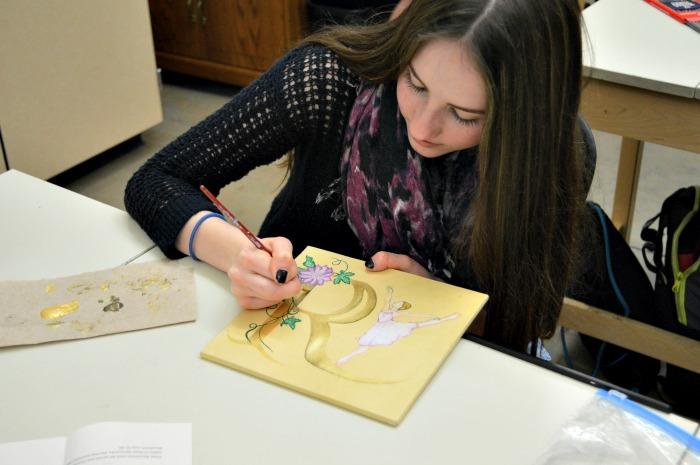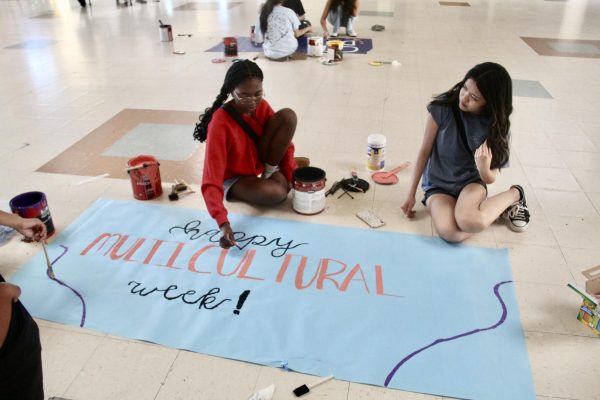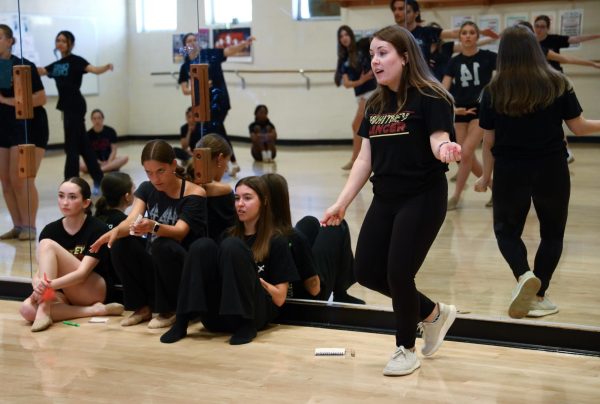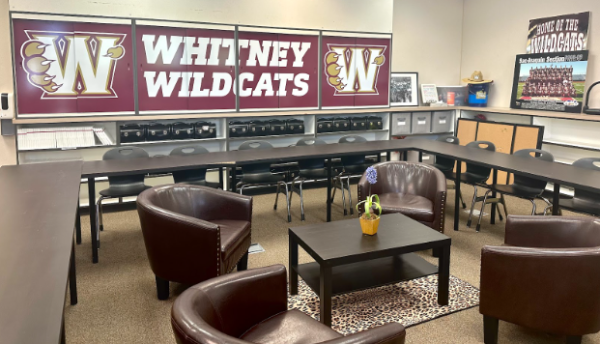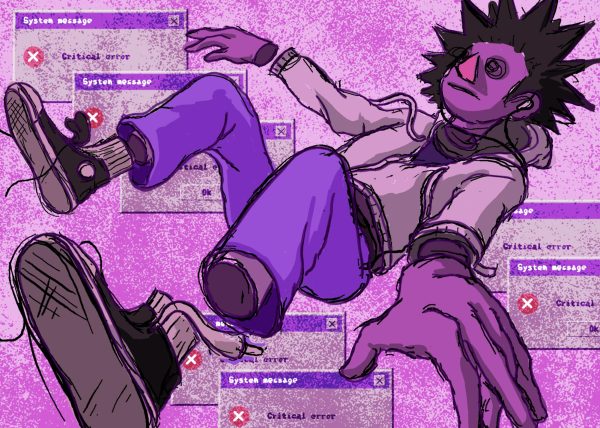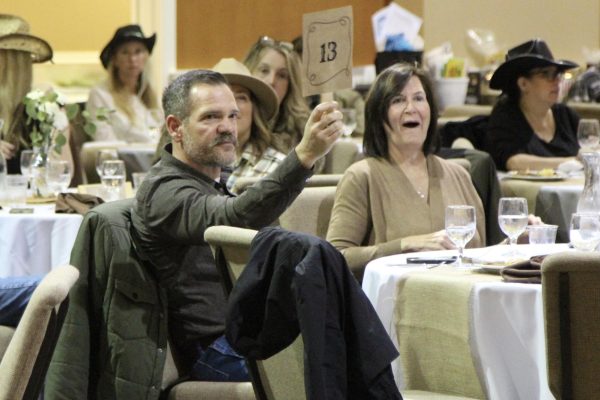Illuminated manuscript empowers self expression in Art III/IV
She sighed as she leaned back in her chair and her eyes glanced over her work. Everything that was required was present, and it was rather impressive in her own eyes. But there was something specific that she really enjoyed about her artwork. She had added more than just what was expected on her tea stained paper. This time, her artwork had a personal touch; a specific item that would make her letter hers. A symbol of her style, and her own life.
The development of artistic lettering illuminated the script of the early times. It was used in bibles and books in Ancient Greece, Rome, and during the times of the Renaissance and Middle Ages in Europe. Now, illuminated manuscript has been assigned to the students of Art III/IV and is not just being used to resemble a letter with a gold outlining and design, but is being used to resemble personal and original ideas in an artistic way.
Students, before taking on the assignment, learned of the origins of illuminated lettering and the different types of manuscript as well.
“We watched a lot of videos on how they made the paper and everything involved in it. Some golds are really expensive,” Nicole Wellington said.
Wellington used her skills and her own love of nature to design her “N” lettering on tea stained paper.
“I mostly went with the nature route. I put a tree, and some vines I thought were really pretty and I even put some birds.” Wellington said.
Students could decide on one of two consistencies for their paper. They could choose to use a black paper, so metallic and brighter colors would appear much brighter than on the tea stained paper. However, if they chose tea-stained paper, students could make their own to create their illuminated letter on.
Students will be graded on multiple aspects of illuminated lettering, such as the use of gold and also the use of the other art skills they developed previously from the lower-level art classes.
“Mrs. [Deborah] Lane is just looking for creativity and consistency in our art skills, originality, as well as the gold outlining,” Austin Anderson said.
However, if students are using the black paper, and the students can replace the gold outlining with a metallic or silver upon request.
Not only are students using examples of the lettering from past times to influence their artwork, but they are taking their art to a personal level by adding symbolism and objects that students hold special.
“I chose the bird because my brother has an interest in birds, and I also looked up the symbolism of birds and it means family, love, strength and free spirit, and I chose the autism puzzle piece because my brother is autistic,” Sienna Flores said.
Students feel that by Mrs. Lane adding this personal side to the lettering project, students can use their creativity and express themselves without having parts of the assignment hold them down.
“I just like that we can incorporate anything we want and we can really put ourselves into the project,” Wellington said.
With their knowledge of illuminated letters and their own personal inspiration, students will be finishing their illuminated letters this week.

